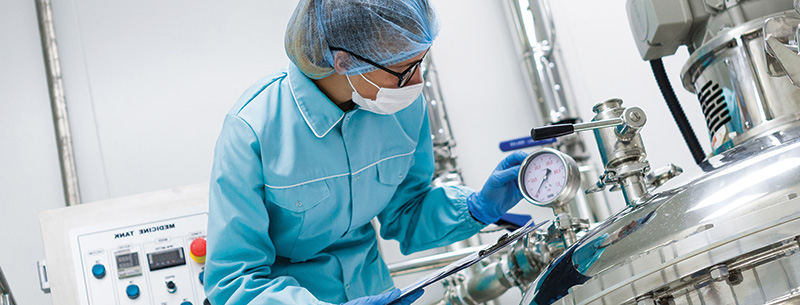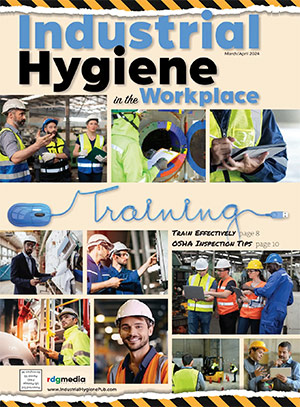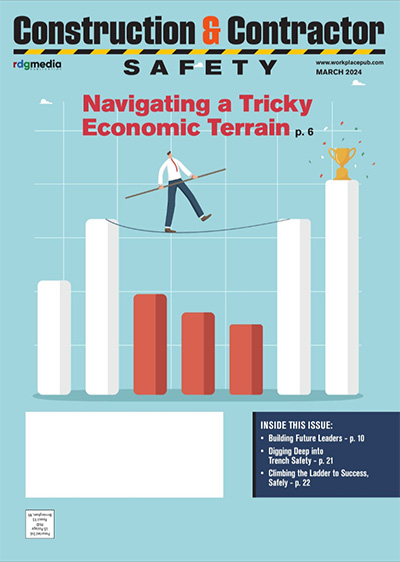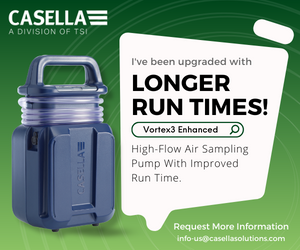Navigating Laboratory Safety During a Pandemic
The following is an exclusive article written for Industrial Hygiene in the Workplace by Phillip C. Bauknight, Of Counsel in Fisher & Phillips LLP’s New Jersey office.
Safety is always critical to the operation of a laboratory. However, the COVID-19 pandemic has dramatically increased the potential risks and safety concerns for many laboratory workers.
As any experienced laboratory personnel can attest, rules can sometimes fall by the wayside even during “normal” times. While such lapses do not always have an immediate impact, the current pandemic has created an environment where it is more important than ever to take the necessary steps to protect laboratory workers. Although guidance continues to evolve, there are various steps you can take to reduce risks for laboratory workers both during the pandemic and going forward.
Centers for Disease Control and Prevention Guidance
In addition to the general precautions issued by the Centers for Disease Control and Prevention (CDC) that we have largely adopted as part of our everyday life (i.e., repeated and diligent hand washing, covering your mouth, social distancing, masks, using hand sanitizer, staying home if you’re sick, etc.), the CDC has also issued detailed recommendations for general laboratory safety practices during the COVID-19 pandemic.
General Guidance
 The CDC recommends that all laboratories perform site-specific and activity-specific assessments to identify and mitigate risks. The risk assessments should include consideration of the following:
The CDC recommends that all laboratories perform site-specific and activity-specific assessments to identify and mitigate risks. The risk assessments should include consideration of the following:
- The number of people that the laboratory can safely accommodate while maintaining social distancing
- The flow of personnel traffic
- Procedures for cleaning and sanitizing commonly shared equipment and areas
- Emergency communication and operational plans.
In addition, the CDC recommends that every laboratory should develop a COVID-19 health and safety plan to protect employees. The plan should be shared with all staff and include the following:
- Steps to help prevent the spread of COVID-19 if an employee is sick
- Instructions for sick employees to remain home until the appropriate return to work criteria are satisfied
- Information on whom employees should contact if they become sick
- Flexible sick leave and supportive policies and practices
- Designation of a contact person responsible for responding to employees’ COVID-19 concerns
- Accurate information about COVID-19, how it spreads, and the risk of exposure
- Reinforced training on proper handwashing practices and other routine infection control precautions
In addition, the CDC recommends that laboratories should ensure that employees have access to personal protective equipment (PPE), appropriate disinfectant products, soap, clean running water, drying materials for handwashing, as well as alcohol-based hand sanitizers that contain at least 60% ethanol or 70% isopropanol.
Social Distancing
The CDC also recommends that laboratories follow social distancing recommendations by:
- Adjusting staff schedules
- Adding more shifts
- Implementing non-overlapping teams to minimize personnel contact
- Identifying laboratory tasks that can be performed with reduced face-to-face interactions
Employers should also consider reconfiguring workspaces and locations where there is shared equipment to reduce crowding; creating one-directional paths, decluttering workspaces; and disposing of unnecessary items to help with reconfiguration. If reconfiguration is not feasible, employers are recommended to consider placing barriers (plexiglass, partitions, plastic, etc.) between workstations, desks or equipment that help staff remain six feet apart. Laboratories should also limit visits from vendors and other external partners, instead utilizing virtual communication whenever possible.
Face Coverings
All laboratory personnel should wear cloth face coverings in laboratory spaces that do not have respiratory PPE requirements. In addition, laboratory workers should wear a cloth face covering in settings where social distancing measures are difficult, such as offices, computers and break rooms. In addition, any facial protection worn inside a laboratory area where personnel work with potentially infectious material should not be subsequently worn outside of that laboratory area.
The CDC also recommends that laboratory workers wash their hands before putting on face coverings and also minimize the removal of the coverings. If a laboratory worker contaminates or dirties a face covering, the following procedure should be taken to remove and replace the face covering:
- Remove the face covering carefully
- Untie the strings behind the head or stretch the ear loops
- Handle the face covering only by the ear loops or ties
- Fold outside corners together
- Be careful not to touch eyes, nose, or mouth when removing a face covering
- Place it in a sealed bag until it can be washed
- Wash hands immediately after removing
The CDC also recommends that face coverings should be washed frequently. In addition, depending on the activity, each laboratory worker may need to have multiple clean face coverings available for use. Critically, cloth face coverings are not respirators and are not appropriate substitutes for respiratory PPE.
Personal Hygiene and Disinfection
The CDC also recommends that extra measures be taken to ensure a clean and appropriate work environment as more workers return to the laboratory. Employers should re-evaluate their protocols for use of PPE and cleaning. In addition, employers should increase the number of available cleaning supplies and distribute them throughout the laboratory, making sure to frequently disinfect high-touch locations.
Finally, the CDC recommends that employers should use visual reminders throughout the laboratory environment, such as posters, to emphasize the importance of proper hand hygiene and coughing etiquette.
OSHA-Specific Guidance for Laboratory Workers and Employers
OSHA has also issued COVID-19 control and prevention guidance for clinical and research laboratory workers and their employers. While OSHA’s guidance references the recommendations provided by the CDC, there are several distinct recommendations that should be highlighted.
First, OSHA’s guidance provides risk levels for various laboratory work tasks. For example, employees performing administrative duties in non-public areas of work sites, and away from other staff members, have a “lower” risk of exposure to COVID-19. Alternatively, laboratory workers collecting or handling specimens from known or suspected COVID-19 patients, and those performing aerosol-generating procedures on samples that may (or do) contain SARS-CoV-2, have the a “very high” risk of exposure.
OSHA’s guidance also advises that until more information is known about how COVID-19 spreads, both the CDC and OSHA recommend using a combination of more general precautions (e.g., appropriate respiratory hygiene, cough etiquette, PPE, routine cleaning, disinfection procedures) and eye protection, such as face shields, to protect laboratory workers. OSHA also recommends that laboratory workers should follow recognized biosafety practices to help minimize the transmission of infectious agents.
Employers of laboratory workers are also responsible for following applicable OSHA requirements, including OSHA’s Bloodborne Pathogens, Personal Protective Equipment, Respiratory Protection and Occupational Exposure to Hazardous Chemicals in Laboratories standards. Employers should routinely review their standard laboratory safety and health procedures with their laboratory employees; train and test the competency of their employees regarding the appropriate implementation of these practices; and ensure consistent compliance with these procedures.
Employers of laboratory workers are also recommended to implement protocols for the handling, storing and shipping of specimens. Employers should ensure that their facilities and precautions meet the necessary biosafety level for the work being conducted. Finally, OSHA recommends that employers implement administrative controls, safe work practices and PPE appropriate for the level of risk in the laboratory.
Conclusion
Employers will need to diligently evaluate their laboratory practices to ensure the safety of their employees and to avoid potential legal exposure. As more employees return to work, employers should familiarize themselves with the substantive and detailed recommendations issued by the CDC and OSHA. However, as the guidance continues to evolve, consultation with a workplace safety and catastrophe management attorney is a best practice that can serve both you and your business. IHW
About the Author
Phillip C. Bauknight, Of Counsel in Fisher & Phillips LLP’s New Jersey office.
Share on Socials!
Casella Boundary Monitoring Q&A: Identifying Hazards & Ensuring Compliance
Bump Test and Calibration Issues and Answers
Emergency Eyewash & Shower Equipment: ANSI/ISEA Z358.1-2014
Leaders in Industrial Hygiene
Council for Accreditation in Occupational Hearing Conservation (CAOHC)
Subscribe!
Sign up to receive our industry publications for FREE!








